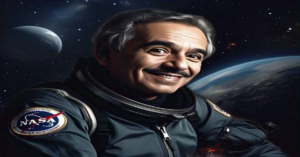Gabriel García Márquez creation of the genre magical realism
Gabriel García Márquez: The Man Who Made Magic True

🔮 How Gabriel García Márquez Re-Wrote the Rules of Reality — and Science Fiction
Gabriel García Márquez, or “Gabo,” was one of the most powerful modern literary figures. His instinct for merging the surreal with the mundane, creating worlds in which the miraculous is no more remarkable than breathing, became a literary movement of its own — magical realism.
Late last year, through his inimitable voice, he brought the Latin American storytelling tradition, full of folklore and politics and human emotion, to the world. From his beginnings in journalism to his being awarded the Nobel Prize in Literature in 1982, García Márquez was all about storytelling power and his fame endures around the world.
👶🏽 Gabriel García Márquez Born of Myths, Raised by Legends
García Márquez was born on March 6, 1927, in the small town of Aracataca, Colombia.Brought up by maternal grandparents, he grew up in a universe where real life and fantasy mingled seamlessly. His liberal grandfather, Colonel Nicolás Márquez, a veteran of Colombia’s civil wars, ingrained in him a profound respect for justice, bravery, and the cycles of history.
His grandmother, Tranquilina Iguarán, was a font of folklore, superstition and ghost stories that seemed to him more real than the world in which he lived.
The book was his way of reconciling this; and thus these twinned influences became the foundation of his narrative voice. In subsequent interviews, García Márquez would cite his grandmother’s straight-faced recounting of supernatural anecdotes as a major source of his inclination toward grandiose realism. To the young Gabriel, spirits, portents and miracles were not strange oddities, but simply essential parts of life.
Aracataca, portrayed with little attempt at disguise in One Hundred Years of Solitude as the fictional Macondo, would figure prominently in his work as a small town, a microcosm of Latin America with all its historical and social intricacies. In Macondo, García Márquez built an eraless, allegorical place where history recurs and characters live in an almost mythic time warp.
✍️ Writing Fiction from Journalism: From the Facts to the Fakes
García Márquezbecame world famous as a novelist, but his career began with and also encompassed reportage, which would influence his later work in important ways. During the 1940s and ’50s he contributed to major Colombian newspapers, including El Universal and El Espectador. He also traveled to various parts of Latin America and Europe as a journalist, writing about politics and human interest topics.
He accrued a sharpened eye for detail, a nuanced sense of narrative pacing a rooted sensitivity for political undercurrents in these years. A number of his later novels reflect this time. For instance, Chronicle of a Death Foretold feels like an investigative report into a murder that the whole town knew was going to happen but did nothing to prevent. The melding of documentarian structure and lyrical prose gave the story a searing, near-accusing atmosphere that must make readers consider their implication in collective guilt.
García Márquez liked to say he was a journalist before he was a novelist. Journalism for him wasn’t just a steppingstone; it was a foundational discipline and a way to process how to see the world clearly and a way to honor “the true behind the truth” of appearances.
⚡ The Emergence of Magical Realism: Gabriel García Márquez
While the term “magical realism” predates García Márquez, it was his work that solidified the genre’s popularity across the globe. In his hands, magical realism was a way to articulate those deep truths of Latin American culture — its brutal history, its colonial legacies, its spiritual riches.
In the world of García Márquez, characters tend to stumble upon the supernatural without challenging it. Folding laundry, a girl goes up to heaven. An epidemic of insomnia causes an entire town to lose its memory. Ghosts walk among the living. These are not mere embellishments but metaphors for historical trauma, societal rot and missed opportunities.
The attractive thing about his style is the tonal uniformity of the writing. The fantastic is delivered in a journalistic tone, which makes it believable. This technique of narration corresponds to the fact that in Latin America community does forge the mythical and religious with the realm of the everyday. For García Márquez, the magical was not a form of escapism; it was a deeper stratum of reality.
📚 Blockbusters of the Imagination: The Books That Transformed the World

🌪️ One Hundred Years of Solitude (1967)
Widely viewed as his masterpiece, One Hundred Years of Solitude traces the Buendía family over seven generations in the town of Macondo. It combines myth, history, love, war and existential reflection in a warp of a narrative that is intimate and epic.
The book deals with the passing of time and its cyclical qualities, as events repeat themselves through generations like a curse. Their characters are born with the same names, repeat the same dumb mistakes, and pay for the sins of the past. The story is a critique of political corruption, imperialism and the myth of progress.
Its impact was monumental. It has been translated into some 40 languages, sold more than 50 million copies and lifted Latin American literature to new heights on the world stage. Reviewers praised its novelty, its poetic writing, and its philosophical insights. Macondo became an archetype of Latin America’s collective memory and identity.
❤️ Love in the Time of Cholera (1985)
Solitude, by Gabriel García Márquez This novel portrays the longevity and ridiculousness of love, following the characters Florentino Ariza and Fermina Daza, who are young sweethearts whose love is thwarted by decades of separation. The backdrop is a cholera epidemic and the novel spans half a century, ending in a bittersweet reunion.
More of an anti-love story, the novel looks at love in its various guises — romantic, obsessive, platonic and marital. It asks if time purifies or corrupts love, if true commitment is noble or delusional.
🔪 Chronicle of a Death Foretold (1981)
This novella muddies the boundaries between journalism and fiction. Inspired by an actual event, it probes the murder of one Santiago Nasar, which the whole town knew was about to happen, but none tried to stop. The story unspools like a forensic dissection, investigating the parts that honor, gossip, inertia and guilt play.
The novel is a chilling indictment of social mores, asking whether cultural tradition can excuse violence. The spare, haunting language will leave readers uncomfortably hanging long after they have finished this dark tale.
🕊️ A Rebel with a Pen: Gabriel García Márquez
García Márquez was no stranger to political participation. A left-wing fellow traveler, he was an acerbic critic of American foreign policy in Latin America and an aficionado of socialist principles. His warm ties with Fidel Castro were controversial, but had a basis in a common vision of Latin American sovereignty.
These positions have had results. Jesus, denied a visa to the United States for decades, a ban lifted by President Bill Clinton, who admired the work. And as he was watched and attacked, García Márquez remained undaunted, seizing on journalism as much as fiction to confront authoritarianism and inequity.
His political awareness was not only abstract; it was in the stories he told. In The Autumn of the Patriarch (1975) he portrays a monster of a tyrant (based on several Latin American dictators). The novel is a stark and haunting examination of power, isolation and rot.
🏆 The Nobel Moment: When the World Finally Noticed
In 1982, García Márquez was awardee of the Nobel Prize in Literature. The citation praised his “novels and short stories, in which the fantastic and the realistic are still in a richly composed world of imagination.”
In his Nobel lecture, “The Solitude of Latin America,” he spoke not just as a writer but as a voice for an entire continent. He highlighted the surreal realities of Latin American history—dictatorships, disappearances, revolutions. Those often exceeded the imagination of fiction writers. The world may have viewed magical realism as fantasy. But for García Márquez and his people, it was the lived experience.
The award cemented his place among the literary greats. So validated the cultural and artistic richness of Latin America on a global stage.
💔 Gabriel García Márquez: Love, Loss, and the End of an Essay
In private life, García Márquez was celebrated for his life-long marriage to Mercedes Barcha, whom he wed in 1958. She was the mother of two sons, Rodrigo and Gonzalo. One of his sons became a television and film director and the other became a graphic designer and publisher.
His later years were marked by a struggle against lymphatic cancer. Later, dementia.e continues to lend his name to streets, schools, and cultural institutions across Latin America. His books remain the foundation of literary curricula around the world. A Posthumous Surprise: The Book He Wanted Burned In 2024, a decade after his death, García Márquez’s sons published a novel. Until August that he had to clear before his death that he wanted to be destroyed.
Gabriel García Márquez His stories
The novel tells a story of desire, fidelity, and self-awareness. His narrating the annual visits of the protagonist to her mother’s grave to have anonymous sexual escapades. So he remind herself of the excavated parts of her identity. The decision reignited a long debate about posthumous publication, ethically, and the authorial intent.
To Garcia Marquez’s staunchest supporters, it was a betrayal, to his critics, a last gift. On the other hand, the novel gave one last peek at his masterful mind. Reminding the audience that even in death and ten years of judgment, García Márquez could still “get people talking.”
Why Gabriel García Márquez Still Matters Today:
Because in an era of binary thinking and irrefutable reality. He teaches us that truth is multi-layered and contorted. Because he shows that unreality can speak truths that facts cannot. He gave a voice to the voiceless, except the voice of the dreamers. He is bigger than literature, and his influence extends to film, art, and even political theory. The books which are still adapted fifty years after publication continue popular and studied.
📄 Final Thought: In the Ordinary, There Is Magic